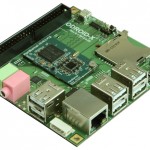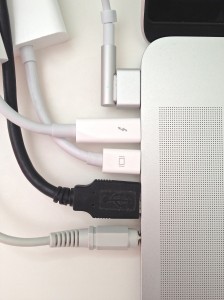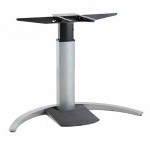Monthly Archives: September 2012
The Sorry State of Thunderbolt Peripherals
In theory, Thunderbolt is awesome, one tiny port that can be used to connect monitors, GPUs, high speed storage and other peripherals to laptops and desktop computers. What’s not to like?
Unfortunately, Thunderbolt peripherals are slow to arrive on the scene. Apple released their first computers with Thunderbolt ports over a year ago. To compliment them, they released the gorgeous and expensive Thunderbolt display.
Don’t get me wrong, the Apple Thunderbolt display is a perfect demonstration of why Thunderbolt is so cool. The display has one cable with two connectors, a magsafe connector to power an Apple laptop, and a Thunderbolt connector. The display itself is gorgeous, includes speakers and a webcam, and it expands that single Thunderbolt connection into gigabit ethernet, three USB2 ports, a FireWire 800 port, and another Thunderbolt port that you can use to attach another Thunderbolt display, or a mini-DisplayPort adapter. Awesome!
On the other hand, it is $999. That is by no means a bad price for a great 27″ high resolution display, but I’m happy with the 24″ display I already have and in no hurry to replace it. But then there is mess. Ugh! I’d love to reduce that mess down to a power cable and a Thunderbolt cable.
In theory, I should be able to buy a docking station. In practice only Belkin and Matrox have even announced Thunderbolt docking stations, but neither of them are shipping, and when they do, they are expected to run $250 – $500.
Apple had a one-year exclusive on offering Thunderbolt ports on their computers. Now that that has ended, I hope we’ll see more competition, but it may take a while. NewEgg only has ~5 motherboards with Thunderbolt ports right now. A bigger issue though may be that so far, Intel is keeping a tight reign on the chips required to interface with Thunderbolt.
I’d be quite happy with a simple device that connected to a Thunderbolt port and provided USB3 ports and DisplayPort connection. I could hang USB ethernet and audio adapters off of that.
ODROID-X

There are so many interesting options for hackable ARM devices, I don’t really know where to start, so I’ll start with the ODROID-X.
The ODROID-X is a development board based on the Samsung Exynos4412 quad core ARM Cortex-A9 SoC with a Mali-400 quad-core GPU. The board adds 1GB of RAM along with 6 USB 2 ports, a 10/100 ethernet port, micro HDMI and analog audio audio in and out. It sells for $129.
This makes it one of the faster options available, but also one of the more expensive when compared to many of the Chinese options. It also has the advantage of already supporting a full Linux distro (ubuntu), whereas many of the cheaper options currently only have support for Android.
A brief history of hackable ARM devices
Once upon a time, there was the SheevaPlug, a $99 computer with a 1.2GHz ARM CPU, 512mb RAM, 512mb of flash storage, USB2 and an SDHC card reader that ran Linux. The SheevaPlug gave birth to inexpensive commercial products, like the PogoPlug, and it’s cousin, the heavily discounted Seagate Dockstar.
Since then, there has been an explosion of ARM-based development platforms. The SheevaPlug was based on the Kirkwood system-on-a-chip from Marvel, who partnered with GlobalScale Technologies to create development and reference designs that could easily be customized for various applications. Similarly, Texas Instruments, which has its own ARM based SOC families, created the Pandaboard, BeagleBoard and BeagleBone to encourage people to develop applications for their chips. Globalscale and Marvel haven’t rested on their laurels, either, they’ve created a number of additional variants on Sheeva platform, some with video output, others with SATA interfaces, additional GigE, WiFi, and other differentiators.
This is really just scratching the surface. Samsung, Qualcomm, Nvidia and Broadcom all make their own ARM SOCs, and there is an explosion of devices based on Chinese chips, like the Allwinner A10 (single core ARM Cortex A8 + dual Core Mali GPU), Rockchip 3066 (dua core ARM Cortex A9 + quad core Mali GPU) and AMLogic 8726-M3.



